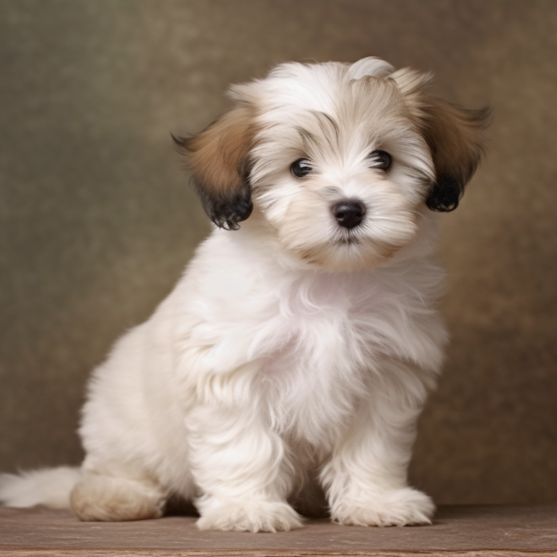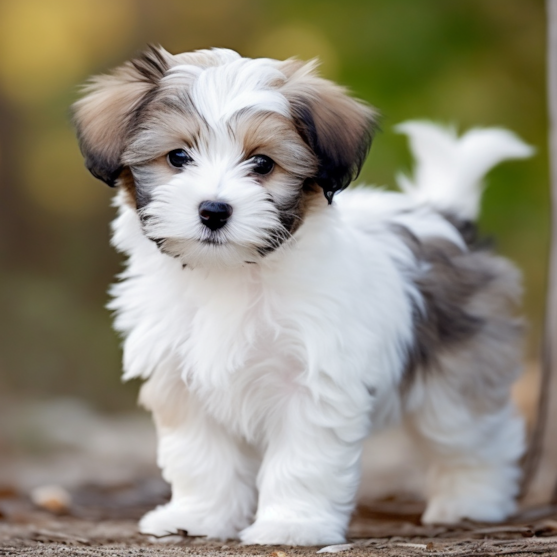Havachon Breed Information


The Havachon is a small, affectionate companion dog with a soft, fluffy coat and a personality that leans toward playful and gentle. A mix between the Havanese and the Bichon Frise, this hybrid brings together two people-loving breeds that were made to be close companions. With their expressive eyes and cheerful nature, Havachons feel at home in just about any setting.
They enjoy staying near their people, whether that means tagging along from room to room or curling up for a quiet nap. Their size makes them a good fit for apartment living, while their upbeat personality adds energy to family homes. Havachons tend to get along with children, other pets, and new visitors—especially when they’ve had positive early socialization.
This breed does best in homes where there’s time for connection. They don’t need constant action, but they do need company. With their soft coats, steady energy, and friendly attitude, Havachons offer an easy blend of comfort, fun, and companionship that suits both new and experienced dog owners alike.
Characteristics
- Affectionate and loyal – Havachons form strong bonds with their families and enjoy staying close. They’re happiest when they’re part of the daily routine and rarely stray far from their favorite people.
- Friendly with others – They typically get along well with other dogs and adjust easily to visitors. Their sociable nature helps them feel comfortable in busy households or relaxed environments.
- Playful and lighthearted – This breed enjoys gentle play and stays cheerful throughout the day. They bring a quiet liveliness to the home without being overly hyper or demanding.
- Compact and sturdy – Most Havachons are small enough to carry but solid in build. Their size makes them easy to manage in any living space.
- Low-shedding coat – Their coat is soft, often wavy or curly, and doesn’t shed much. Regular grooming keeps it healthy and helps reduce allergens in the home.
- Tolerant and patient – With the right introductions, they do well with children and other pets. Their calm nature makes them a good match for families of all kinds.
- Adaptable to different settings – Whether living in a quiet apartment or a busy house, Havachons adjust well. They don’t need a large yard—just time, attention, and a spot near their people.
- Moderately alert – They may bark when they hear unfamiliar sounds but tend to quiet down quickly once they feel secure.
- Eager to please – They respond well to gentle training and like being part of shared activities. Their willingness to listen makes them easy to guide.

Appearance
The Havachon is a small, fluffy dog with a soft coat, bright eyes, and a naturally sweet expression. A cross between the Havanese and the Bichon Frise, this breed carries a gentle, well-balanced look that reflects its easygoing personality. From head to tail, the Havachon has the kind of appearance that makes people stop and smile.
Most Havachons weigh between 10 and 15 pounds and stand around 9 to 12 inches tall. They have a sturdy, compact build with a slightly longer-than-tall frame, short legs, and a level back. While they’re small in size, they don’t feel fragile. Their body has enough substance to give them a grounded, balanced presence.
Their coat is typically medium to long in length, with a soft, wavy, or curly texture. Some coats lean toward the silky feel of the Havanese, while others reflect the fuller, cottony texture of the Bichon Frise. Regardless of the type, their fur gives them a plush, rounded look that adds to their teddy bear appeal.
Coat colors vary widely. Havachons can be white, cream, gray, black, tan, apricot, or a mix of these shades. Many have unique patterns or markings that give them a one-of-a-kind appearance. Their coloring, combined with their soft fur and round features, gives them a warm and friendly look that suits their personality.
Their eyes are dark, round, and full of expression. They sit wide apart and give the dog an alert, affectionate gaze. Earsare medium in length, drop down close to the cheeks, and blend into the coat naturally. The tail is typically plumed and curves gently over the back or side when relaxed.
Temperament
The Havachon is an affectionate, cheerful companion with a steady personality and a strong desire to be close to its people. Bred from two social, family-oriented breeds—the Havanese and the Bichon Frise—the Havachon naturally leans toward friendliness, loyalty, and emotional awareness. It thrives in homes where connection and routine are part of everyday life.
This breed tends to bond closely with its family. Havachons don’t just enjoy your company—they prefer to be near you, often choosing to rest at your feet, follow you from room to room, or curl up on the couch during quiet moments. They’re not clingy, but they do best in homes where someone is around for a good part of the day.
Social by nature, Havachons usually greet guests with curiosity and warmth. They tend to get along well with children, especially when play stays gentle, and they adapt well to multi-pet households. Early socialization helps reinforce their natural confidence and prevents shyness or hesitation in new situations.
They enjoy play but aren’t overly excitable. Their energy stays balanced, and they know when it’s time to wind down. Whether it’s a game of fetch, a short walk, or just following a sunny patch across the living room floor, Havachons stay happy when they’re involved in the daily rhythm of the home.
Their intelligence and emotional sensitivity make them easy to live with. They pick up on tone, respond to calm direction, and often learn routines quickly. That same sensitivity means they do best with a gentle hand—positive reinforcement and praise go a lot farther than firm correction.
The Havachon’s temperament makes it a natural fit for families, seniors, or anyone looking for a small, steady dog with a loving heart. They don’t need a lot to stay happy—just regular attention, a little structure, and a home that feels close-knit.
Care
Grooming
The Havachon has a soft, fluffy coat that needs regular care to stay clean, comfortable, and mat-free. While this breed doesn’t shed much, its hair grows continuously and tends to tangle if left unattended. A steady grooming routine keeps the coat healthy and gives the dog that clean, tidy look that suits its gentle personality.
Most Havachons benefit from brushing three to four times a week, especially if their coat leans toward the longer, curlier side. A slicker brush or pin brush works well for removing loose hairs, preventing tangles, and keeping the coat fluffy and full. For dogs with finer or silkier coats, a metal comb can help work through areas that are prone to matting—like behind the ears, under the legs, and around the neck.
Bathing is usually needed every three to four weeks, depending on the dog’s activity level and environment. Use a gentle, dog-specific shampoo that won’t strip the coat or irritate the skin. After bathing, the coat should be dried thoroughly—especially in cooler weather—and brushed again to prevent tangles from forming.
Many Havachon owners choose to have their dogs professionally groomed every six to eight weeks, which includes trimming the coat, cleaning the ears, clipping the nails, and tidying up the face and paws. Some owners opt for a puppy cut or a shorter trim to make daily maintenance easier, especially in warmer climates.
Ear care is another important part of the grooming routine. Because their ears hang down and are covered in hair, they can trap moisture or debris. Weekly checks and gentle cleaning help prevent irritation or infection.
Dental care matters too. Like many small breeds, Havachons can develop tartar buildup and gum issues if their teeth aren’t cleaned regularly. Brushing their teeth a few times a week, along with dental treats or vet-recommended rinses, helps support long-term oral health.
Their nails should be trimmed every three to four weeks. If left too long, they can affect posture and comfort—especially for a dog that spends most of its time indoors or on soft surfaces.
Exercise Needs
The Havachon has a steady, moderate energy level and does best with a daily routine that includes movement, interaction, and variety. While they don’t need intense workouts to stay healthy, regular activity helps keep their mind sharp and their body in balance.
Most Havachons do well with 30 to 45 minutes of exercise each day, spread across a couple of short walks, indoor play, or light training sessions. They enjoy getting outside and exploring but are equally content with time spent inside—as long as they aren’t left without stimulation for too long.
Walks are a simple and effective way to meet their daily needs. A couple of strolls around the neighborhood, combined with a little backyard play or some tug time indoors, gives them enough activity to stay calm and well-adjusted. They move with light steps and enjoy a pace that matches their people.
Havachons also benefit from mental stimulation. They’re bright, curious, and easily engaged, so adding puzzle toys, obedience games, or scent-based activities keeps things interesting. These dogs enjoy learning and often thrive when challenged in small, positive ways.
Their size makes them adaptable to apartment living, but they still need daily interaction. Without enough engagement, they may develop habits like barking, chewing, or restlessness—especially if left alone for long periods. A regular routine and time spent with their family each day go a long way in keeping them emotionally steady.
They don’t need high-impact sports or long hikes, and they’re not built for endurance. Instead, they do best with short, consistent sessions of movement and play. Even ten-minute intervals throughout the day can make a big difference in keeping their energy in check.
Health
The Havachon is generally a healthy, well-balanced breed, especially when bred responsibly and cared for with consistency. As a hybrid between the Havanese and the Bichon Frise, the Havachon can benefit from the genetic diversity that comes with crossbreeding—but it may still inherit certain tendencies from either parent.
Routine veterinary care, a balanced diet, and an active lifestyle go a long way in maintaining long-term health. Most Havachons enjoy lifespans of 12 to 15 years, and many stay energetic and affectionate well into their senior years.
That said, there are a few areas to keep an eye on. Allergies—both environmental and food-related—can sometimes show up in this breed, leading to itchy skin, ear infections, or digestive issues. These symptoms are usually manageable with dietary adjustments and regular care.
Dental health is another priority. Like many small breeds, Havachons may develop plaque and tartar if their teeth aren’t cleaned regularly. Brushing several times a week and using vet-approved dental chews helps prevent gum disease and keeps their breath fresh.
The breed may also be prone to tear staining, especially around the eyes. While not harmful, it can affect the look of the coat and may point to mild sensitivities in the eyes or diet. A quick wipe each day and a focus on clean water and quality food usually helps keep it under control.
Other potential concerns—such as patellar luxation, ear infections, or minor joint stiffness—can sometimes appear, but these tend to be less common in well-bred dogs with no known hereditary risks. Regular checkups and early monitoring help keep small issues from becoming bigger problems.
Keeping your Havachon at a healthy weight is one of the most important ways to support long-term health. Their small frame isn’t built to carry extra weight, and staying lean helps reduce stress on the joints and keep energy levels stable.
Overall, most Havachons stay healthy, happy, and active when their needs are met. They’re not a high-maintenance breed when it comes to medical care, but they do best in homes that pay attention to the little details—the kind of care that adds up to a long, comfortable life.
Lifespan
The Havachon typically lives between 12 and 15 years, with many reaching their mid-teens when cared for properly. This breed enjoys the kind of longevity that comes from a small, well-balanced frame, a steady temperament, and a lifestyle built around connection and consistency.
A healthy Havachon moves through life with a gentle pace and a strong bond to its people. They don’t need much to stay well—just regular activity, a balanced diet, and time with their family. Their needs are straightforward, and that simplicity often translates into long, steady years of companionship.
As they age, Havachons tend to remain affectionate and engaged. They may slow down a little, nap more often, or become more set in their routines, but they rarely lose interest in being close. Many continue to follow their people from room to room, enjoy quiet play, and seek out soft spaces to rest near familiar voices.
A few small changes can help them stay comfortable in their later years. Shorter walks, softer bedding, and a bit of extra warmth in cooler weather all make a difference. Routine vet visits remain important, as early detection of minor changes helps maintain quality of life and prevent discomfort.
Their emotional well-being also plays a role in their longevity. Havachons thrive in stable, loving homes where they feel safe and included. The longer they stay in the rhythm of family life, the more they remain connected and emotionally steady through every stage.
Training
The Havachon is a smart, responsive dog that enjoys learning and usually aims to please. With the Havanese and Bichon Frise as parent breeds, this mix brings together intelligence, social awareness, and a cooperative spirit—making training both rewarding and straightforward when approached the right way.
They do best with positive reinforcement. Havachons respond well to gentle praise, treats, and encouragement. They enjoy feeling included and often pick up on routines quickly, especially when training sessions feel like part of daily life rather than a chore.
Consistency is key. These dogs benefit from short, regular sessions that reinforce good habits without overwhelming them. Whether you’re teaching sit, stay, come, or basic leash manners, keeping the tone light and upbeat helps keep them engaged.
Havachons can sometimes show a touch of stubbornness, especially when they’re unsure of what’s being asked or if they sense frustration. Staying calm, offering clear cues, and ending on a positive note helps build trust and long-term results.
House training tends to go smoothly, especially when started early and paired with a routine. Regular bathroom breaks, crate training, and positive reinforcement for outdoor success help build consistent habits. Accidents are rare once a rhythm is established.
Socialization is equally important. Havachons enjoy being around people and other animals, but early exposure to new places, sounds, and experiences helps prevent nervousness and builds confidence. Calm, positive introductions go a long way.
They also enjoy mental stimulation. Puzzle toys, learning new tricks, or playing hide-and-seek with treats adds variety and keeps their minds active. Their intelligence makes them fast learners, and they often surprise their owners with how quickly they pick up new skills.
Above all, training with a Havachon is less about control and more about connection. They thrive when they feel included and understood, and they grow into well-mannered companions when given structure, attention, and patience.
History
The Havachon doesn’t have a long or ancient history, but it comes from two breeds with deep roots in companionship. Developed within the last few decades, the Havachon was created by crossing the Havanese with the Bichon Frise, both of which were known for their affectionate nature, low-shedding coats, and steady presence in family life.
Like many hybrid breeds, the Havachon was designed to bring together the best qualities of both parents. Breeders hoped to create a small dog that would be friendly, adaptable, and easy to care for—without sacrificing charm or personality. As interest in companion dogs grew, so did the appeal of crossbreeds like the Havachon, especially among families and individuals looking for a dog that fit easily into everyday life.
The Havanese comes from Cuba, where it spent generations as a house dog for families living in Havana. It was prized for its soft coat, playful energy, and ability to get along with just about everyone. The Bichon Frise has a European background and was known for its cheerful demeanor, gentle curls, and social adaptability. Both breeds were raised for close companionship, not for work or guarding—and those traits are easy to spot in the Havachon today.
While the Havachon isn’t recognized by major kennel clubs, it has found its place in homes across the U.S. and beyond. It’s acknowledged by several designer breed registries and continues to grow in popularity, thanks to its manageable size, gentle nature, and suitability for a wide range of households.
Though still considered a newer breed, the Havachon carries a calm, familiar presence. It brings together two time-tested family dogs and offers something simple and lasting—quiet companionship, day-to-day joy, and a personality that fits right in.
